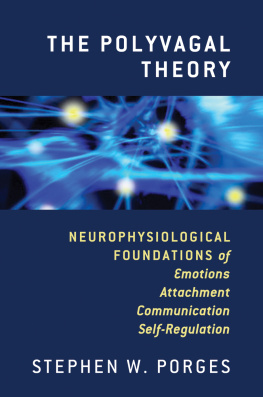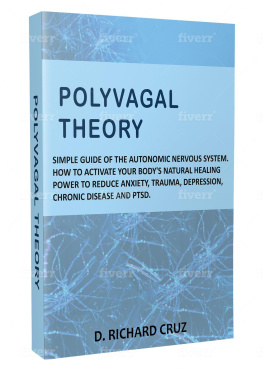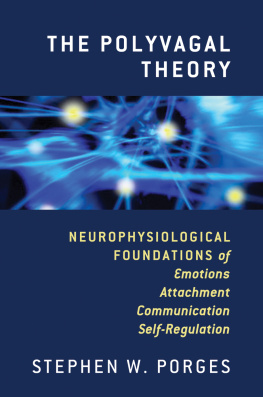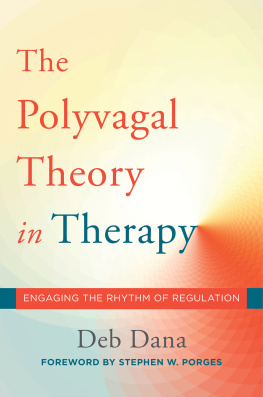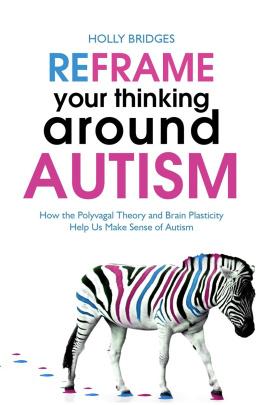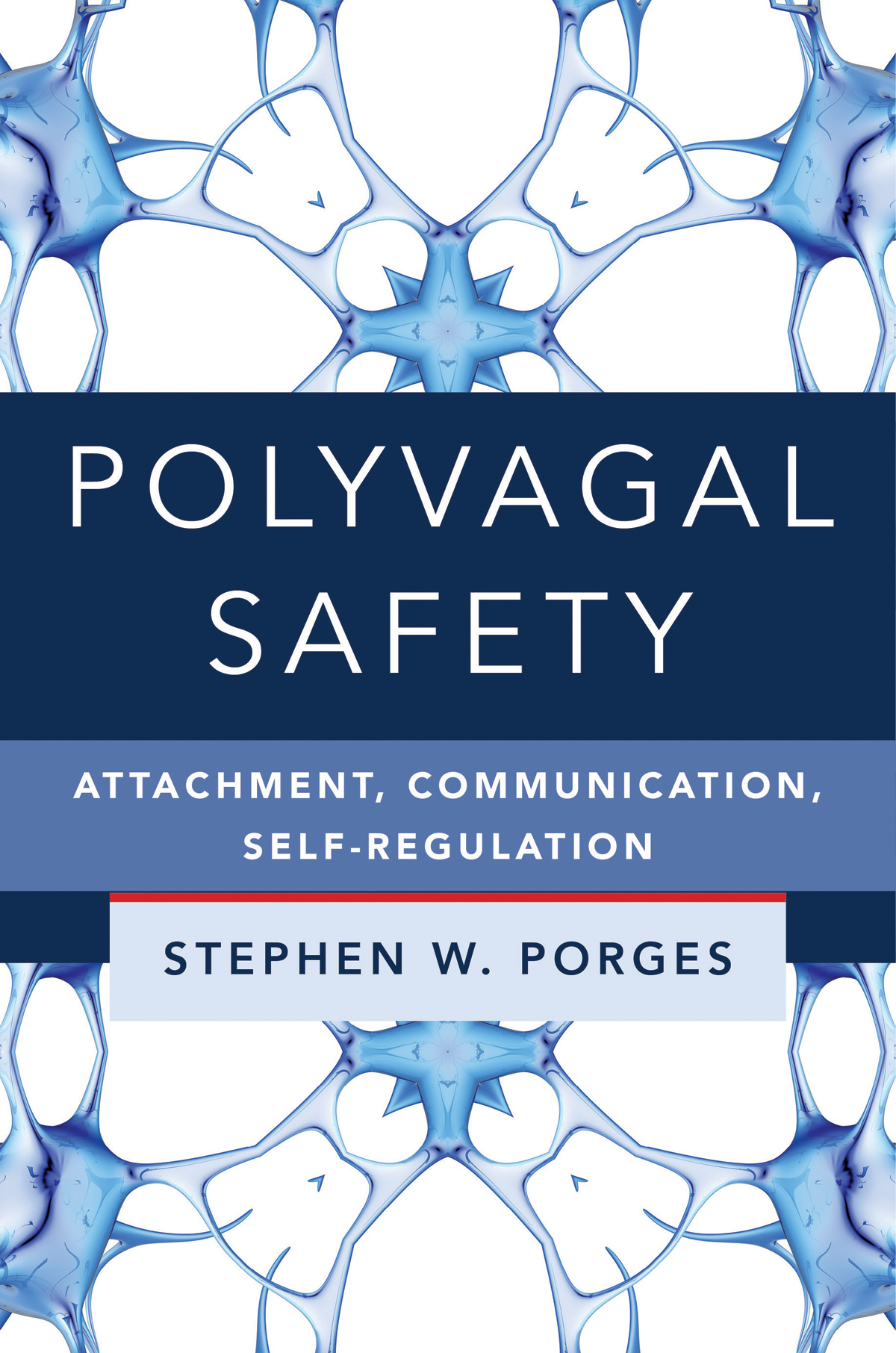Contents
Guide
Page List
The Norton Series on Interpersonal Neurobiology
Louis Cozolino, PhD, Series Editor
Allan N. Schore, PhD, Series Editor (20072014)
Daniel J. Siegel, MD, Founding Editor
The field of mental health is in a tremendously exciting period of growth and conceptual reorganization. Independent findings from a variety of scientific endeavors are converging in an interdisciplinary view of the mind and mental well-being. An interpersonal neurobiology of human development enables us to understand that the structure and function of the mind and brain are shaped by experiences, especially those involving emotional relationships.
The Norton Series on Interpersonal Neurobiology provides cutting-edge, multidisciplinary views that further our understanding of the complex neurobiology of the human mind. By drawing on a wide range of traditionally independent fields of researchsuch as neurobiology, genetics, memory, attachment, complex systems, anthropology, and evolutionary psychologythese texts offer mental health professionals a review and synthesis of scientific findings often inaccessible to clinicians. The books advance our understanding of human experience by finding the unity of knowledge, or consilience, that emerges with the translation of findings from numerous domains of study into a common language and conceptual framework. The series integrates the best of modern science with the healing art of psychotherapy.
POLYVAGAL SAFETY
Attachment, Communication,
Self-Regulation
STEPHEN W. PORGES

A NORTON PROFESSIONAL BOOK
To the heroic survivors of trauma who have
taught me to cherish shared feelings of safety.
Contents
W hen the Polyvagal Theory was initially conceptualized, I did not consider it as an expansive paradigm-shifting model. In developing it, I thought it was consistent with antecedent research and theory. In a way, I thought it was the obvious next step. During the 25 years following the initial presentation of the Polyvagal Theory, through my experiences with the scientific community across many disciplines, I learned that the theory provides the framework for a new brain-body or mind-body science. Moreover, I learned that as health-related disciplines embraced the theory, a new polyvagal-informed strategy could be embedded in mental and physical health treatment models. This strategy would focus on recruiting the nervous system of the client or patient as a collaborator on a shared journey toward wellness. Embracing this strategy would emphasize that the bodys quest for safety is embedded in the actions of the nervous system in promoting health. Thus, safety and threat are not only psychological constructs, but have parallels in the autonomic nervous system. When the autonomic nervous system is in a state of calmness and social accessibility, then treatments for both mental and physical disorders can be efficiently implemented. In contrast, when the autonomic nervous system is in a state of defense and vulnerability, then it is in an antagonistic state that blunts the effectiveness of treatment. Simply stated, the theory uncovered the structures and portals through which our neurobiological quest for safety through connectedness with others may be implemented.
When a new theory is presented, its intellectual accessibility is dependent on several complex and often not acknowledged historical features. Most importantly, there is a need to understand (1) antecedent theories, (2) the language used to describe the hypothetical constructs illustrating the functions described in the theory, and (3) questions that the theory proposes to answer. Since evolution is an organizing principle in Polyvagal Theory, in which neuroanatomical structures are proposed to facilitate specific adaptive functions, an understanding of vertebrate evolution and neuroanatomy of the neural regulation of the autonomic nervous system are required for a critical dialogue. In addition, since the theory leads to testable hypotheses based on dynamic adjustments in autonomic function, a sophisticated understanding of the metrics of measurement (e.g., time series analyses) is necessary.
Scientists are intellectually focused and affiliated with peer groups defined by a shared commitment to study common problems. They see the world through their research questions, explicit and implicit theories, and methodologies. My scientific origins are rooted in the world of psychophysiology, a science that emerged in the 1960s to study how physiological responses paralleled psychological phenomena such as mental effort, attention, expectancy, stimulus detection, decision making, truthfulness, and preference. At the time I first presented the Polyvagal Theory, arousal theory was prevalent in psychophysiology. Although arousal theory had a long, influential history in science, it had a relatively simplistic underlying model. Basically, arousal theory emphasized that arousal was a linear construct indexing a dimension from low to high levels of activation that could be measured or inferred from observing behavior or physiology. The relationship between arousal and performance was often portrayed as an inverted U-shaped function in which optimal performance occurred within a midlevel range, while poor performance was observed at low and high levels of arousal. This relationship was known as the Yerkes-Dodson law (Yerkes & Dodson, 1908). Metaphorically, arousal represented the energy of the human nervous system. Arousal was easily understood, since when it was reflected behaviorally it could be quantified as greater activity and when reflected autonomically it could be observed as increases in sweating and heart rate.
Early psychophysiological research assumed that peripheral autonomic measures provided sensitive indicators of arousal. This view was based on a rudimentary understanding of the autonomic nervous system in which changes in electrodermal activity (e.g., sweating) and heart rate were assumed to be accurate indicators of sympathetic activity. As the activation arousal theory developed, a continuity between peripheral autonomic responses and central mechanisms was assumed (see Darrow et al., 1942), and sympathetic activity was assumed to parallel activation of the brain. According to this assumption, organs influenced by sympathetic efferent fibers, such as the sweat glands, blood vessels, or the heart, were potential indicators of limbic or cortical activity (Duffy, 1957; Lindsley, 1951; Malmo, 1959).
Although the specific pathways relating these various levels were never outlined and are still sketchy, electrodermal (e.g., GSR) and heart rate became the primary focus of research during the early history of the Society for Psychophysiological Research. This was due to their presumed sympathetic innervation and, in part, to their measurement availability. By default, this emphasis created a research environment that neglected several important factors: (a) parasympathetic (e.g., vagal) influences, (b) interactions between sympathetic and parasympathetic processes, (c) peripheral autonomic afferents, (d) central regulatory structures, (e) the adaptive and dynamic nature of the autonomic nervous system, and (f) phylogenetic and ontogenetic differences in structural organization and function.
Polyvagal Theory proposed a more complex nonlinear model of autonomic regulation that focused on identifiable and potentially measurable neural pathways that contribute to autonomic regulation through a definable feedback system that could promote homeostatic function. The theory required a conceptualization of autonomic regulation that was challenging to psychophysiologists. At the time, psychophysiology emphasized a top-down representation of central nervous system function in measurable peripheral physiology (e.g., autonomic response patterns). Thus, many psychophysiologists hypothesized that systematic quantification of peripheral autonomic responses would provide reliable information linked to brain function and mental processes. Prior to the Polyvagal Theory, my research was consistent with this top-down perspective. For example, I wrote an article titled Heart Rate Patterns in Neonates: A Potential Diagnostic Window to the Brain (Porges, 1983).
Next page

